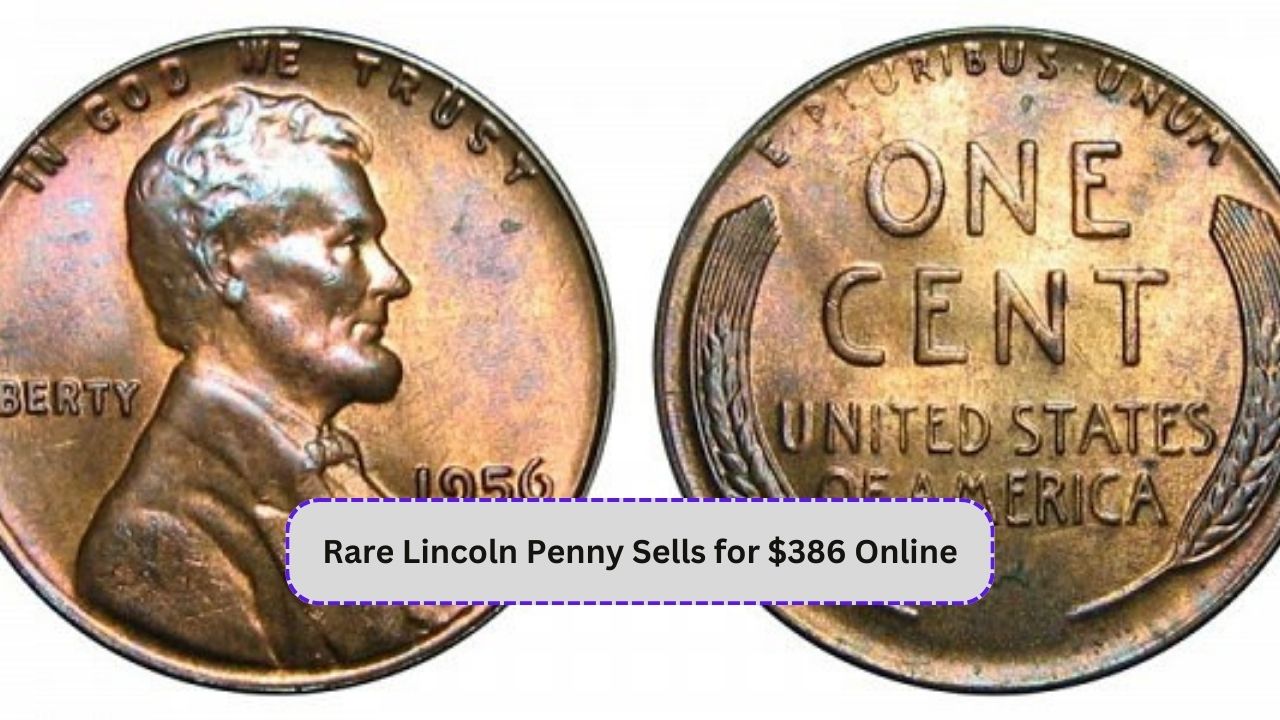Imagine discovering that a simple penny in your pocket is worth hundreds of dollars. Recently, a 1956 Lincoln penny without a mintmark sold online for $386 after a competitive bidding war. citeturn0search3 This surprising sale has sparked interest among coin collectors and everyday individuals alike. Could you have a valuable penny hiding in your change jar? Let’s explore what makes certain Lincoln pennies so special and how you might identify one.
The Story Behind the 1956 Lincoln Penny
The Lincoln penny, featuring the profile of President Abraham Lincoln, has been a staple of U.S. currency since 1909. The 1956 penny is part of the “Wheat” series, named for the wheat stalks depicted on the reverse side. These pennies were minted in Philadelphia (no mintmark) and Denver (marked with a “D”). The recent $386 sale was for a Philadelphia-minted penny, notable for its lack of a mintmark.
Why Are Some Pennies So Valuable?
Several factors can make a penny valuable:
1. Minting Errors: Mistakes during production, such as double strikes or off-center images, can create unique coins that are highly sought after.
2. Rare Dates and Mintmarks: Certain years and mint locations produced fewer coins, making them rarer. For example, a 1922 penny missing the “D” mintmark is valued at up to $26,868.75. citeturn0news16
3. Condition: Coins in near-perfect condition, with minimal wear and clear details, are more valuable.
How to Identify a Valuable Penny
To determine if your penny is valuable, consider the following steps:
1. Check the Date and Mintmark: Look at the year and the letter below the date. No letter means it was minted in Philadelphia; “D” stands for Denver, and “S” for San Francisco.
2. Examine for Errors: Use a magnifying glass to spot any unusual features, like doubled images or missing elements.
3. Assess the Condition: Coins are graded on a scale from 1 to 70. Higher grades indicate better condition and higher value.
Valuable Pennies
Here are some examples of valuable Lincoln pennies:
| Year | Mintmark | Notable Feature | Approximate Value |
|---|---|---|---|
| 1943 | None | Bronze composition instead of steel | $372,000 |
| 1944 | S | Steel composition instead of bronze | $373,750 |
| 1922 | None | Missing “D” mintmark | Up to $26,868.75 |
| 1972 | None | Double die obverse | Up to $1,400 |
Note: Values are approximate and can vary based on the coin’s condition and market demand.

How to Sell a Valuable Penny
If you believe you have a valuable penny, follow these steps:
1. Get It Graded: Professional grading services can assess your coin’s condition and authenticity.
2. Consult a Coin Dealer: Experienced dealers can provide insights into your coin’s value and potential buyers.
3. Consider Auctions: Rare coins often fetch higher prices at auctions, especially if multiple collectors are interested.
Protecting Your Coins
To maintain the value of your coins:
– Handle with Care: Hold coins by the edges to avoid fingerprints.
– Store Properly: Keep coins in a cool, dry place, preferably in protective holders.
– Avoid Cleaning: Cleaning can damage the coin’s surface and reduce its value.
Conclusion
The recent sale of a 1956 Lincoln penny for $386 highlights the potential hidden value in everyday items. By understanding what makes certain pennies valuable and how to identify them, you might discover a treasure in your own home. So, next time you empty your pockets, take a closer look—you never know what you might find.
FAQs
1. What makes a penny without a mintmark valuable?
A penny without a mintmark indicates it was minted in Philadelphia. Its value depends on factors like rarity, condition, and any minting errors.
2. How can I tell if my penny has a minting error?
Look for unusual features such as doubled images, off-center strikes, or missing elements. Using a magnifying glass can help spot these details.
3. Is it worth getting my penny professionally graded?
If you believe your penny is rare or in exceptional condition, professional grading can authenticate and potentially increase its value.
I Work as a Content Writer and I like Writing Articles




